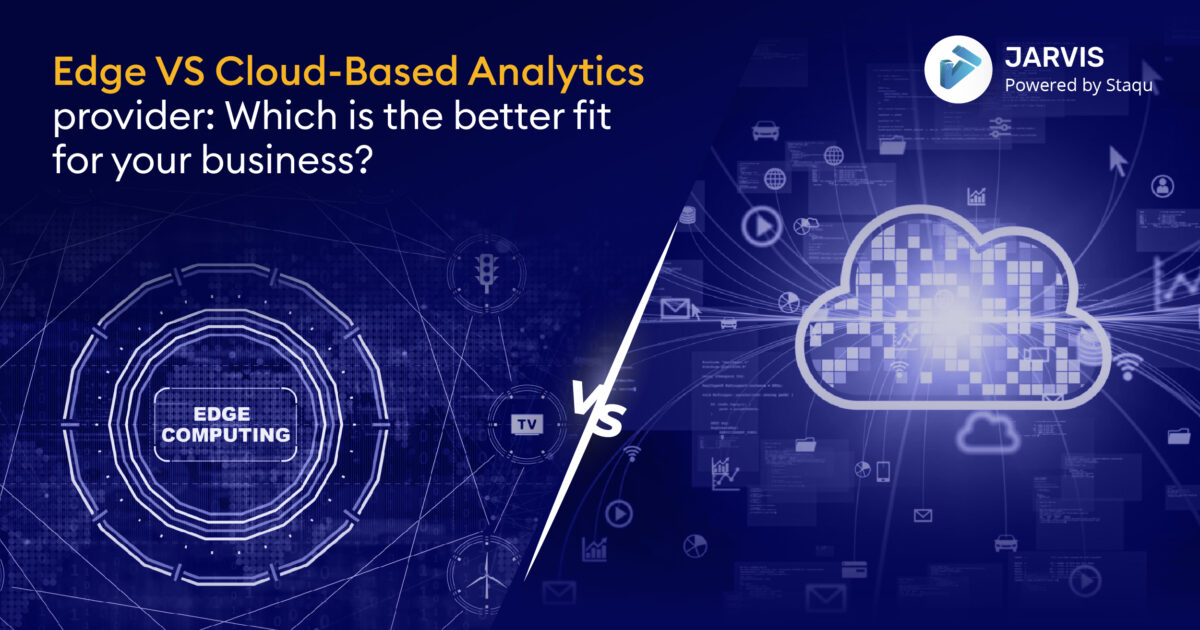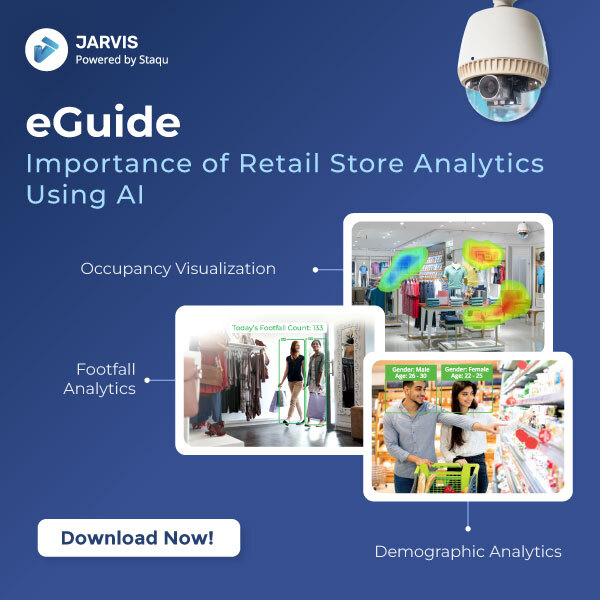Edge vs Cloud-based analytics provider: Which is the better fit for your business?

Businesses today show great interest in edge vs cloud-based analytics providers. We at Staqu investigate which analytics solution will help enterprises better.
Artificial intelligence (AI), which was once the inspiration for science fiction movie plots, is now finding practical uses that are changing how businesses are run. To assist organizations in running their operations, developers are looking into how to combine AI with standard technologies.
Big data analytics is still a crucial component of growing security and surveillance platform developments across numerous industries. Video analytics and its implementations for the “edge” or the “cloud” are a hot topic in the market.
What is the significant difference between edge vs cloud-based analytics?
Edge-based analytics uses video data analytics processed within a camera (IoT on edge). In contrast, cloud-based analytics uses remote public or private computing resources (often known as the “cloud”) to analyze data on demand.
Data storage and application execution are both possible in clouds. They are server farms or datacenters-created software-defined environments. Edge is also used for data collection. They are actual physical spaces made of hardware that are not data centres.
Also Read: Free and Fair Electoral: How JARVIS Automated The Bihar Elections Yet Again
Cloud-based analytics
For a good reason, cloud computing has grown to be one of our generation’s most well-liked technological advancements. Its centralization maximizes security and control while enabling simple, seamless remote access. Because it allows authorized users to easily access the information and applications they require whenever and wherever they need them, it is changing business models all over the world.

Download eguide
With the introduction of 5G and its benefits like low latency, fast speeds, and increased capacity, 5G is a welcome force, especially for businesses that rely on the cloud. Real-time data streaming accessible in milliseconds will be made possible by cloud computing powered by 5G technology. For example, in cases of emergency response for events such as intrusion detection or fire detection, receiving alerts immediately is crucial. With this new technology’s support for continuous storage and significantly higher productivity, businesses that rely on virtual business practices have seen a major boost. Reduced capital costs are also a significant benefit of deploying cloud-based analytics. This is possible because of the cloud’s vast capacity, which prevents the need for additional hardware costs.
As mentioned, the power and capacity of the cloud are its main advantages.
- Power: In contrast to the edge, which may be constrained in certain areas, the cloud can easily handle large-scale analytics projects while integrating machine learning and AI.
- Capacity: It enables simple flexibility and scalability, enabling business growth and goals in an agile manner.
Edge-based Analytics
Although edge-based analytics has fewer latency problems, to stay relevant in today’s technological world, cloud-based analytics is the way to go. Edge computing, which places computing resources nearby where they are needed rather than requiring remote access, is a logical extension of edge analytics. Edge computing reflects a shift in computing paradigms from a centralized to a decentralized environment. Additionally, the role of edge-based analytics in data transfer is preferable because the edge’s close proximity to the user reduces significant privacy risks.
The main advantage of edge analytics is the reduced latency, allowing immediate and local data analysis and utilization. Edge analytics will be preferred in some circumstances. Still, centralized, massive, cloud-based data analysis that is not time-sensitive will be preferable in other situations.
Why are cloud-based providers better for your video analytics solution?
Video data analytics examines unprocessed video surveillance data to discover patterns and results that can be converted into practical security operations-business intelligence. Assisting managers in charge of fraud investigations and security in making sense of massive amounts of surveillance video data makes it possible to put measures in place to address security breaches and threats.
Book A Free Demo
The majority of data from IoT network-connected devices is gathered and delivered to cloud platforms like Amazon Web Services (AWS), Microsoft Azure, Google Cloud Platform, and other cloud service providers for processing and analytics. Staqu has partnered with the major cloud platforms to provide automated video analytics solutions through JARVIS to businesses from various industries.
Because of the cloud’s maturity, there are various analytical choices that can be customized to every use case. It should be stressed that edge analytics solutions stand in stark contrast to the maturity of the cloud. JARVIS is also time-efficient since it can be integrated into your existing infrastructure. The time spent on installing hardware components decreases, and thus it can boost operational efficiencies.